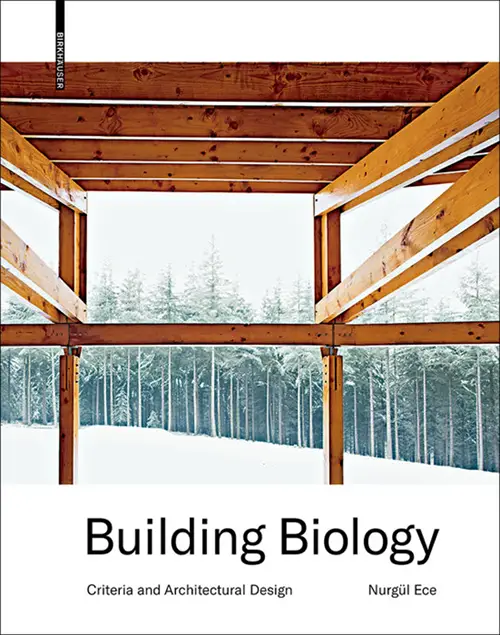
Interview with Katharina Gustavs – Building Biology Testing Specialist IBN in Canada
What do you do professionally?
About 20 years ago, I established a Building Biology Consulting Office on the West Coast of Canada with a special focus on EMF testing. The building biology approach helps me to always keep my eyes open for all environmental factors that may causally contribute to illness. My consulting services range from information on how to avoid wireless radiation exposure and recommendations for low-EMF electrical wiring practices to reviews of recommended building materials. Also, I often find myself in the role of a mediator, explaining the special needs of those with environmental or disease-related issues and resolving conflicts between family members or landlords and tenants.
As a professional translator of German and English, I focus on topics like environmental medicine, healthy building, and electromagnetic fields. Besides the Institute of Building Biology + Sustainability IBN, I do translations for various consumer protection organizations, building biology associations, and the European Academy for Environmental Medicine, including educational materials, scientific publications and guidelines.

View from my home office
Forest in East Sooke
Pacific coast
Black bear at the beach
Diverse mosses and lichens – a great indicator of clean air1 View from my home office2 Forest in East Sooke 3 Pacific coast 4 Black bear at the beach5 Diverse mosses and lichens – a great indicator of clean air
Why and when did you qualify as a Building Biology Consultant IBN and Building Biology
Testing Specialist IBN?
After immigrating to Canada at the beginning of the 1990s, I experienced the fresh air and the diversity and vastness of the great Canadian outdoors as very healing. In contrast, indoor environments in which I lived were either contaminated with mold and/or polluted with electromagnetic fields. I wanted to change that.
In my search for a healthy living environment, I discovered that in Germany Wolfgang Maes in cooperation with the Institute of Building Biology + Sustainability IBN had just released the first Building Biology Evaluation Guidelines for Sleeping Areas in 1992. The holistic approach of the Standard of Building Biology Testing Methods SBM, which the Evaluation Guidelines are based on, convinced me immediately, especially because this standard not only considers mold and pollutants, but also different types of electromagnetic fields and wireless radiation besides other risk factors.
Since there were no Building Biology Testing Specialists on the Canadian West Coast at that time, I was motivated to become one myself. It was my intention to support the health of my own family but also to help other people. In 1999, I began my journey to qualify as a Building Biology Consultant IBN and then also as a Building Biology EMF Specialist IBN.
Why and when did you translate the Building Biology Course IBN?
The Building Biology Institute in the US has always only offered an extremely abridged version of the Building Biology Course IBN. So I was very excited when the Institute of Building Biology + Sustainability IBN in Germany asked me to translate the (almost complete) Building Biology Course IBN into English. Since 2015, the IBN has offered the English Building Biology Online Course worldwide.
I always enjoy translating building biology texts. The cooperation with the IBN is simply great, both professionally and personally. It is a nice challenge to translate new building biology concepts for a wider audience and, in the case of the online course, also to add international resources. In addition, I can learn a lot of new things in the course of this translation work and I am always automatically up to date. I enjoy interacting with the course participants and passing on the holistic approach of building biology. Only recently, I again translated and adapted the comprehensive update of the online course.

Cellulose insulation is available at almost any building supply store; otherwise, only rigid foam panels as well as fiberglass and mineral wool
Cedar
Cedar siding north side: right image: untreated for 20 years; left image: brushed with water after 20 years6 Cellulose insulation is available at almost any building supply store; otherwise, only rigid foam panels as well as fiberglass and mineral wool 7 Cedar8 Cedar siding north side: right image: untreated for 20 years; left image: brushed with water after 20 years
What do you especially like about your work as a Building Biology Testing Specialist?
The human body is a measuring instrument with an enormous bandwidth and high sensitivity. The body’s own environmental data, however, are not displayed on an LCD screen like in a measuring instrument, and the standard blood count is often within normal limits. Yet, various bodily symptoms clearly demonstrate that the body’s own ability to repair has been exceeded. In these situations affected people are often labeled as mentally ill. No wonder that many affected people often have a long ordeal behind them before they contact me.
I feel truly fulfilled when I uncover the root of a problem, and taking action to fix it can have an immediate positive impact on health and well-being. At times, some people may point to a cause for their suffering that, based on testing results, turns out to be unremarkable. In my experience, however, any place where someone feels especially unwell will usually feature one or several environmental factors that significantly exceed average ambient levels.
What building biology solutions are available for low-EMF electrical wiring systems?
In the area of electromagnetic fields, there is still a lot of creativity required in Canada. Shielded wiring is not available for residential construction. You have to make do with armored/metalclad cable or electrical metal tubing. In highly energy-efficient buildings, armored cables with their aluminum or steel spirals may cause problems due to air leakage. No luck with shielded junction boxes either. For hospitals and IT facilities, however, there are metal receptacles with an solated ground available. Shielded lamps or shielded power bars are not commercially available. Due to the different types of power grids, products from Germany cannot simply be imported to Canada. DIY solutions are called for. Fortunately, cutoff switches are available. Wireless smart meters can often be easily shielded with a cover made of stainless steel mesh.

Electricity mostly comes into homes via overhead power lines. Now utility poles are often fitted with small cell antennas for nationwide mobile communication
For a low-EMF building wiring system, armored cables can be used
Shielding of a wireless smart meter with aluminum window screening, DIY
Shielding of a wireless smart meter with a commercially available smart meter guard made of fine stainless steel mesh9 Electricity mostly comes into homes via overhead power lines. Now utility poles are often fitted with small cell antennas for nationwide mobile communication10 For a low-EMF building wiring system, armored cables can be used11 Shielding of a wireless smart meter with aluminum window screening, DIY12 Shielding of a wireless smart meter with a commercially available smart meter guard made of fine stainless
steel mesh
Is mass timber used for building in Canada?
Canada ranks second in the world for the number of trees per capita. There is no shortage of trees here, but unfortunately old-growth trees are still being cut down. In the battle over the last thousand-year-old cedar trees, more than 1000 protesters were arrested by the police in my region two years ago. First Nations, on whose territory these trees are standing, are divided on this subject. Some want to keep the old-growth trees and others want to derive an economic benefit from them.
For wood frame construction – which is the most widely used building method in Canada – or mass timber construction, we certainly don’t need any old-growth trees, which are defined as being older than 250 years. In contrast to concrete, solid wood is a highly sustainable building material. Mass timber construction is heavily supported by the government. In a database, very detailed records are kept of all mass timber projects. To date, almost half of all mass timber buildings in Canada have been built in British Columbia alone. Since 2020, the building code allows mass timber buildings to rise up to 12 stories tall. The majority of them are multifamily buildings and public buildings. In the manufacturing of cross-laminated timber (CLT), mostly glue is used to hold the solid wood strips together. There are two manufacturers in British Columbia that also offer CLT with wooden dowels.
What green building certification systems in North America are of particular interest to building
biology?
There are two certification systems for sustainable and healthy building in North America that embrace many guiding principles of building biology.
The Living Building Challenge was launched in 2006 with the vision to develop renewable buildings that generate more energy than they themselves use. This standard sees itself not only as a building certification system but, similar to building biology, as a road map to a sustainable and livable future. Inspired by the efficiency and elegance of a flower, the performance areas of this building certification system are referred to as petals: place, water, energy, health + happiness, materials, equity, and beauty.
After having remembered that energy-efficient buildings are built for human beings, the WELL Building Standard was created in 2014. This standard is fully focused on the health and well-being of those using buildings. With more than 100 features and 10 concepts, this standard is very comprehensive: air, water, nourishment, light, movement (physical activity), thermal comfort, sound, materials, mind (mental health), and community.
Even though features of indoor environmental quality – besides clean air – now also include natural daylight and noise control, the electromagnetic quality of indoor environments has not yet been considered in these two standards. A great deal of awareness still needs to be raised in this area.
Thank you very much for this interview!
Online Course
How to become a Building Biology Consultant IBN?
➔ buildingbiology.com
Ihre Stimme zählt
Wir sind neugierig darauf, was Sie zu sagen haben. Hier ist Raum für Ihre Meinung, Erfahrung, Stellungnahme oder ergänzende Informationen. Wir bitten Sie um Verständnis, dass auf dieser kostenlosen Informationsplattform:
- Fragen nicht beantworten werden können – bitte stellen Sie Ihre Fragen direkt an unsere Autor*innenAutor*innen.
- Werbung nicht gestattet ist – Sie können aber gerne mit einem Werbebanner auf Ihre Produkte/Dienstleistungen aufmerksam machen
Quellenangaben und/oder Fußnoten:

Wie werde ich
Baubiolog*in IBN?

How to become a Building Biology Consultant IBN?
Nachhaltig weiterbilden
Know-how, Zusatzqualifikationen und neue berufliche Möglichkeiten für Baufachleute sowie alle, die sich für gesundes, nachhaltiges Bauen und Wohnen interessieren.
Unser Kompetenz-Netzwerk
Hier finden Sie unsere qualifizierten Baubiologischen Beratungsstellen und Kontakte im In- und Ausland nach Standort und Themen sortiert.
Über die Baubiologie
Die Baubiologie beschäftigt sich mit der Beziehung zwischen Menschen und ihrer gebauten Umwelt. Wie wirken sich Gebäude, Baustoffe und Architektur auf Mensch und Natur aus? Dabei werden ganzheitlich gesundheitliche, nachhaltige und gestalterische Aspekte betrachtet.
25 Leitlinien
Für einen schnellen, aufschlussreichen Überblick haben wir in 25 Leitlinien der Baubiologie die wichtigsten Parameter herausgearbeitet, sortiert und zusammengefasst. In 15 Sprachen, als PDF oder als Plakat erhältlich.





0 Kommentare